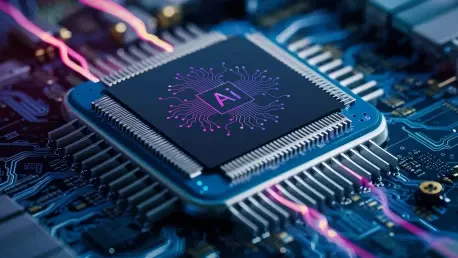Amidst the technological revolution and heightened excitement around artificial intelligence, the computer industry faces a paradox: AI PCs, equipped with neural processing units designed to enhance AI capabilities, have seen a slower-than-anticipated adoption rate. Despite initial enthusiasm from manufacturers, the commercial sector remains hesitant, partly due to economic uncertainties and a lack of compelling applications that justify the additional costs. This investigation explores the factors influencing the adoption pace of AI PCs, encompassing a range of market dynamics and technological challenges.
Introduction to AI PCs and Market Challenges
The integration of AI into personal computers was initially seen as a transformative leap, promising enhanced performance and innovative capabilities. Yet, the promise remains largely unfulfilled as businesses grapple with the practical implications and value of such advancements. At the heart of this issue lies a crucial question: what tangible benefits do AI PCs offer over their traditional counterparts? The absence of a “killer app” or revolutionary use case, coupled with market hesitations, accentuates this dilemma. Analysts have noted that security considerations and a lack of understanding of AI’s potential applications further complicate the picture, suggesting muted enthusiasm within commercial sectors for full AI integration.
Background and Contextual Overview
The broader relevance of understanding AI PC adoption is pivotal in predicting future trends in technology and investment. Economic factors play a critical role in shaping the pace at which innovative technologies permeate markets. The global economic landscape, marked by hesitant recovery, fluctuating tariffs, and trade tensions, exacerbates concerns over significant investments. Organizations, particularly smaller ones, find themselves in a precarious situation where waiting for financial stability seems prudent over risking substantial capital on unproven technologies. This research is vital in delineating how economic conditions intertwine with technological advancements, influencing market dynamics and adoption rates.
Research Methodology, Findings, and Implications
Methodology
In assessing the adoption trajectory of AI PCs, a comprehensive analysis was conducted using multiple data collection strategies. Market surveys, consumer feedback, and industry expert interviews were integrated to encapsulate a wide spectrum of perspectives. These qualitative and quantitative assessments also involved examining sales data, technological integration capabilities, and software development trajectories to form a holistic understanding of the current market climate concerning AI PCs.
Findings
The research elucidates several key findings, primarily highlighting a gap between technology advancement and user readiness. Despite technological capabilities offered by AI PCs, businesses exhibit reluctance toward investing, often pointing to a lack of software standardization and security concerns. The findings suggest that potential adopters are cautious, preferring established technologies amidst economic uncertainty. Geopolitical factors further compound these challenges, with tariff discussions often overshadowing debates on technological merits.
Implications
The implications of these findings resonate across multiple spheres. Practically, they suggest a need for refining AI PCs’ software ecosystems to enhance credibility and functionality. From a theoretical standpoint, the study bolsters understanding of technology adoption in volatile economic climates. Societally, it underscores the necessity for clearer communication of AI’s benefits to bridge the gap between technological promise and consumer confidence. Pushing suppliers toward standardizing software may attenuate apprehensions over longevity and compatibility, potentially accelerating adoption.
Reflection and Future Directions
Reflection
Reflecting on the study unveils several challenges encountered during the research process, notably the diversity of opinions and the rapidly evolving market landscape. Complications such as accurately predicting technological evolution or economic shifts presented obstacles, necessitating adaptive research approaches. However, these challenges contribute positively, indicating potential areas for research expansion and facilitating adaptive strategies in understanding AI PC integration.
Future Directions
Future research may engage in exploring standardized software ecosystems to streamline AI PC adoption. Unanswered questions concerning user satisfaction and security present ample opportunity for exploration, alongside examining potential geopolitical impacts on technological integration. Such endeavors may provide clarity and encourage wider acceptance of AI technology in evolving economic climates.
Conclusion
The examination reveals a complex interplay of factors deterring rapid adoption of AI PCs, including absent transformative applications, economic instability, and insufficient software standardization. Manufacturers remain optimistic, progressively integrating AI into their offerings despite hurdles. Moving forward, embracing standardization and developing compelling applications could forge a path toward heightened acceptance. These findings underscore a pivotal moment in technological innovation, promising eventual growth and integration as conditions stabilize and perceptions evolve.









